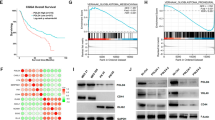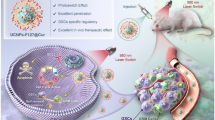Abstract
The aim of this paper is to construct a specific and high-performance gene therapy system for glioma. We constructed a combined promoter 6HRE-GFAP (Hypoxia Responsive Element, Glial Fibrillary Acidic Protein) by gene recombination techniques according to the hypoxia microenvironment in glioma and tested its efficacy and specificity in cultured cells, and then constructed GFAP-Baxα gene expressing system and determined its promoting of apoptosis in glioma cells. Our primary results showed that in U251 and BT325 cell lines, the activity of GFAP promoter was 16.40 and 4.73-fold of the promoter of hTERT (Human Telomerase Reverse Transcriptase), respectively. The activities of 6HRE-GFAP-promoter increased by 3.08 and 1.30-fold under 2% O2 condition compared with those under 18% O2 condition, while under 0.2% O2 condition increased by 8.90 and 2.69-fold, respectively. The glioma cells showed typical apoptotic signs 90 hours after the transient transfection of GFAP-Baxα. In these primary experiments, it showed that 6HRE-GFAP-Baxα system could promote glioma cell apoptosis. It was specific and effective for glioma gene therapy.
Similar content being viewed by others
References
Komata T, Kondo Y, Kanzawa T, Hirohata S, Koga S, Sumiyoshi H, Srinivasula S M, Barna B P, Germano I M, Takakura M, Inoue M, Alnemn E S, Shay J W, Kyo S, Kondo S. Treatment of malignant glioma cells with the transfer of constitutively active caspase-6 using the human telomerase catalytic subunit (human telomerase reverse transcriptase) gene promoter. Cancer Res, 2001, 61(15): 5796–5802
Andrae J, Bongcam-Rudloff E, Hansson I, Lendahl U, Westermark B, Nister M. A 1.8kb GFAP-promoter fragment is active in specific regions of the embryonic CNS. Mech Dev, 2001, 107(1–2): 181–185
Knisely J P, Rockwell S. Importance of hypoxia in the biology and treatment of brain tumors. Neuro imaging Clin N Am, 2002, 12(4): 525–536
Carmeliet P, Dor Y, Herbert J M, Fukumura D, Brusselmans K, Dewerchin M, Neeman M, Bono F, Abramovitch R, Maxwell P, Koch C J, Ratcliffe P, Moons L, Jain R K, Collen D, Keshert E. Role of HIF-1alpha in hypoxia-mediated apoptosis, cell proliferation and tumour angiogenesis. Nature, 1998, 394(6692): 485–490
Brenner M. Structure and transcriptional regulation of the GFAP gene. Brain Pathol, 1994, 4(3): 245–257
Koshikawa N, Takenaga K, Tagawa M, Sakiyama S. Therapeutic efficacy of the suicide gene driven by promoter of vascular endothelial growth factor gene against hypoxic tumor cells. Cancer Res, 2000, 60(11): 2936–2941
Author information
Authors and Affiliations
Corresponding author
Rights and permissions
About this article
Cite this article
Tian, Y., Li, G., Gao, J. et al. Construction of 6HRE-GFAP-Baxα system specific for glioma gene therapy. Front. Med. China 1, 49–53 (2007). https://doi.org/10.1007/s11684-007-0010-x
Received:
Accepted:
Published:
Issue Date:
DOI: https://doi.org/10.1007/s11684-007-0010-x




